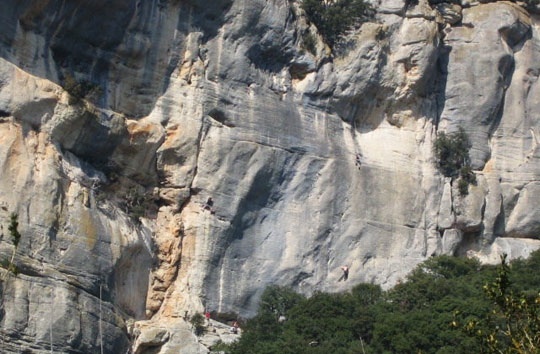
Climbers on Buoux’s world-renowned limestone. On May 13, Buoux’s once-popular West Wall will reopen for the first time in more than two decades. [Photo] Brian Weinstein
In the 1980s, the cragging area Buoux, in Provence, France, was considered by many to be the finest on earth. Its numerous long, grey walls of compact limestone set the perfect stage for climbers from all over to test their skills at the height of the sport-climbing revolution. In the mid-’80s, however, climbing was banned on one of the best crags, the West Wall of Buoux, when land owners and climbers could not agree on a series of access concerns. Now, more than two decades later, the wall will open again on May 13 as part of a four-day climbing festival called Escala’Buoux.
At the height of Buoux’s popularity, countless climbers would trundle on private property, creating discord between villagers and climbers. Consequently, local laws were passed to deny access. However, assiduous cooperation and work from local climbers and the local climbing association have helped broker a reopening.
As the epicenter of sport climbing in the ’80s, Buoux has a storied history. Climbing legends like Tribout, Freira, Raboutou, Edlinger and the renowned Le Menestrel brothers pushed the limits of technical difficulty by establishing some of the hardest climbs in the world at the time: Rev de Papillion (8a), Les Mains Sales (8b) and La Rage de Vivre (8b+). Buoux also is home to Ben Moon’s monumental Agincourt (8c), which he established in 1989. The West Wall houses classics such as Le Loir (7a+), L’Homme Programme (8a) and La vie ne fait pas de cadeau (8a).
“Through the 1980s and early 1990s, Buoux was considered the best crag in the world–the place where the best Euro-jocks came to play and to experiment,” Stewart Green wrote in Rock Climbing Europe. “Here they honed the rock skills needed to open Ceuse, today’s ‘best crag in the world.'”